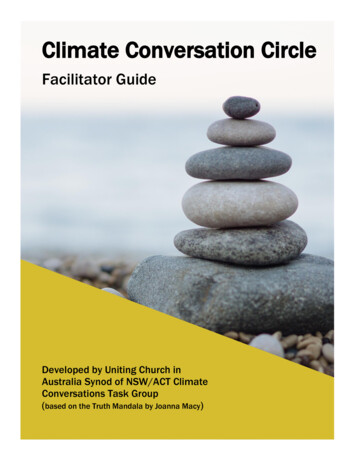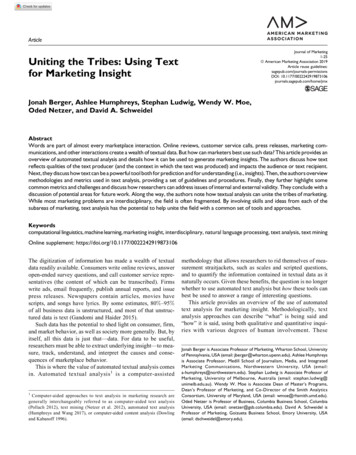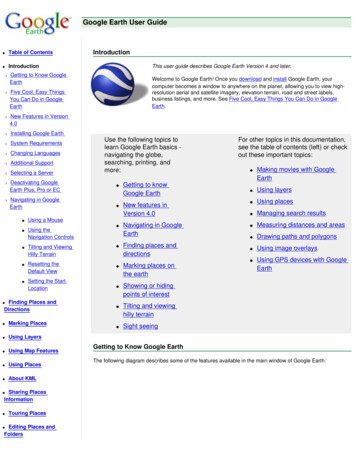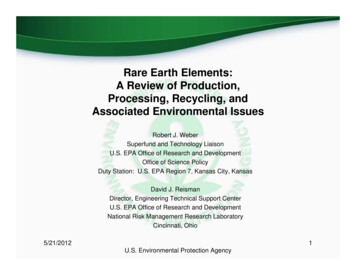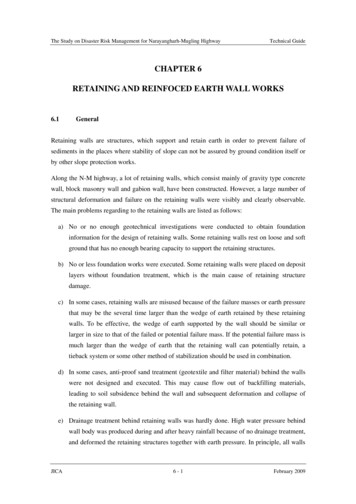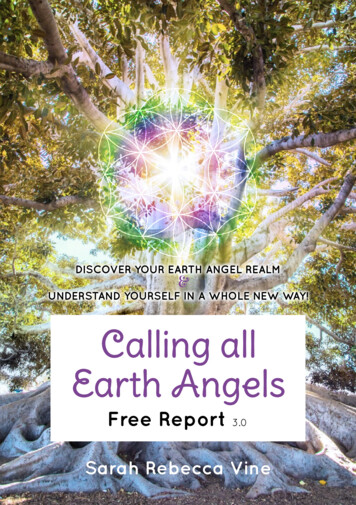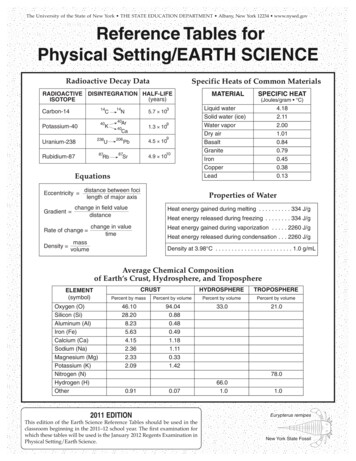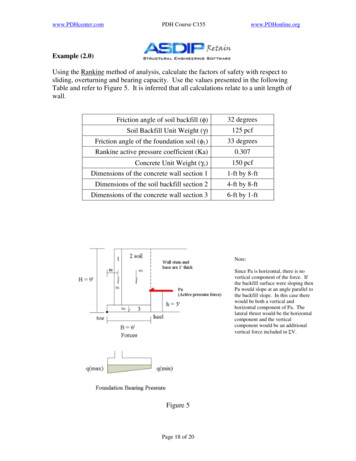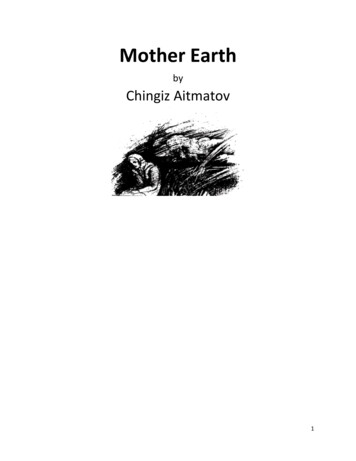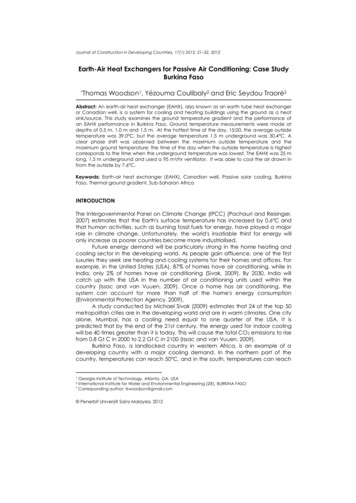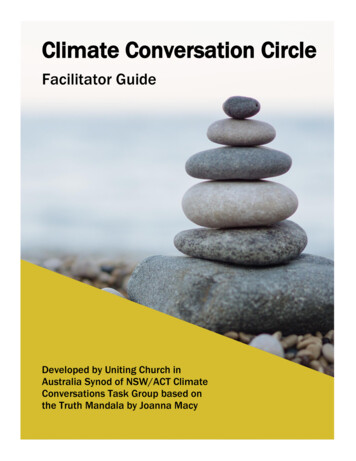
Transcription
Climate Conversation CircleFacilitator GuideDeveloped by Uniting Church inAustralia Synod of NSW/ACT ClimateConversations Task Group based onthe Truth Mandala by Joanna Macy
Climate Conversations GuideInstructions for facilitatorsThis exercise will take about 2 hours, and the last 30 mins is a time fortea/coffee and discussion. If at all possible, when holding these conversationswith groups who don’t know each other, we recommend holding the exerciseover two sessions, with session 1 focusing on getting to know each other (seeAppendix 4) to facilitate the deep sharing outlined here in session 2.What you will needSetupBell/Tibetan bowl/ small cymbalsSymbols:- Stone- Dry leaves- Stick- Empty bowl- CushionTea and coffeeThis scriptOptional: a candle andlighter/matchesPeople sit in a circle. They sit as closelypacked as possible to create a containmentvessel – a vessel for holding and cooking thetruth. The circle they enclose is divided intofour quadrants (visible demarcations are notneeded), and in each quadrant is placed asymbolic object: a stone, dead leaves, a thickstick, and an empty bowl.Principles for creating a safe space are listedon the following page. You might like to printthese as a handout, poster, or read them out.Things to knowGroup size: max of 10 peopleOptional faith elements are used in thisscript. Exclude these if they are notappropriate in your group or context.The introduction to this exercisementions that there are no ulteriormotives involved. Make sure this istrue for you, and your hosting group.This is not an evangelism, gossip orteaching exercise, it is an opportunityfor people to safely share some ofwhat they are feeling. This is aboutbeing present to others in love andcompassion.Participate yourself as facilitator. Don'thold aloof, enter the ritual as honestlyand openly as you can, while fulfilling your responsibilities as facilitator. It helps if youhave experienced the ritual for yourself before acting as facilitator.If you can, review the section in Chapter 5 of Coming Back To Life - Joanna Macy,Molly Brown 1998, on dealing with strong emotions.Feel free to adapt the arrangements to people's needs. In workshops with the elderly,the mandala is set up on a table rather than the floor; to speak each person rises fromtheir chair and stands by a quadrant, sometimes using a can as a talking stick.
Climate Conversations GuideCreating a safe space forClimate Conversation CirclesStart off with silent centering, meditation, a guidedvisualisation or poem or prayerListen deeply without interruption. Cultivate receptivity andacceptance.Be aware of not judging or criticising others.Reflect on what you are hearing.Recognise similarities and differences respectfully.Speak from your own personal experience.Resist the urge to give advice or provide answers.Allow a little space between responses.Take time to respond – check in on where you arespeaking from- what is happening in your mind and body?Feel your thinking.Sit with silence.Maintain confidentiality. What is said in this space stays inthis space.
Climate Conversations GuideScriptPreparationCentering Exercise:Let us take a moment to center ourselves and become present in this experience.Find a comfortable position in your chair.Set your feet flat on the floor.Close your eyes if you’d like to.Tense your body and release – releasing your worries and tension.Bring yourself into this moment and time, this room.Feel where you are sitting, the point of connection between you and the chair.Feel where your feet meet the floor and imagine the earth beneath.What can you hear outside the room?What can you hear inside the room?What can you hear beside you?Focus on your breath, and pay attention to it, in and out.Take some time to sit in silence, just focusing on your breath.If you feel worries or thoughts distract you, that’s ok, just come back to the breath. Ring bell gently.Introduction to the exercise (read by the facilitator): (5 mins)Based on the work of Joanna Macy in ‘Coming Back to Life’ (2014)Facilitator: We have established these Climate Conversations to support ourmembers and community who are feeling tired, overwhelmed, distressed, afraid,fearful, worried, anxious, mourning, grieving, despairing and other emotions related toclimate change.We hope to provide an opportunity for you to share your joys and concerns: givingyou a voice and allowing you to feel heard, validating your feelings and experiences,allowing you to feel understood and connected, and reducing your isolation with these
Climate Conversations Guideemotions. We hope that in this process you might find affirmation, connection,courage and a sense of a way through or a way to change and let go.The ritual structure we are using today provides a simple, respectful, whole groupstructure for owning and honoring our pain for the world, and for recognizing itsauthority and the solidarity it can bring.For this to work well, first and foremost, this needs to be a safe space. Vulnerabilitymust be both welcome and valued. Confidentiality is essential. We ask you to committhat nothing you hear in this process will leave the room.We are not professional counsellors but if anyone is feeling very distressed or if youknow someone who is we can refer you to people who are and have experience inthis area. We will also be sharing some of these contacts at the end of the session, incase you need to talk further about something that comes up for you today.We have no ulterior motives in hosting this session, it is merely a time of mutualsharing; a time to honour the truth of your experience and bring it into the light. Weoffer it as a caring process, and as part of our call to loving, caring, and walking withyou, as Jesus walked with people in love and care.We also do not see this process as merely a springboard into action. You might feelempowered to act after sharing your feelings and feeling heard in this space, but thisprocess is not about what action it leads to – its value is in caring for you here andnow, wherever you are at. We can talk at the end with you if you are seeking supportto move to action.We will be dedicating about an hour to this practice, followed by reflection and sharingover tea and coffee together. Do not be afraid of silences in this time, we honour allthat is said and unsaid.Optional: you might like to light a candle to symbolise the creation of a safe space.
Climate Conversations GuideStage 1: Gratitude10 minutesFacilitator: We will begin our practice by cultivating our sense of gratitude andconnection to Earth.In pairs or threes, please introduce yourselves and share in 5 mins each e.g. What is your favourite tree or animal? If you had a free Saturday what would you do? What kind of natural environment do you connect with the most? How did you build your relationship with nature? What have you seen in nature recently that made you feel happy, peaceful,awestruck or free? What has been a favourite place in nature for you to go for solace or fun?Optional: Include a prayer for all the gifts God gives us through nature.Or share with the group how that felt in your body (If the group is too large, askpeople to just reflect on this feeling).
Climate Conversations GuideStage 2: Expression of grief30 minutesBased on the work of Joanna Macy in ‘Coming Back to Life’ (2014)Facilitator to read aloud: We now enter the ‘Truth Mandala’ exercise to expresswhere we are on our climate and environmental journey. We will do this by sharingfrom one of four perspectives, each represented by a quadrant and a symbol.Entering each quadrant, the facilitator holds the object it contains and explainsits meaning.Stone: This stone is for fear. It'show our heart feels when we'reafraid: tight, contracted, hard. In thisquadrant we can speak our fear.Leaves: These dry leaves representour sorrow, our grief. There is greatsadness within us for what we seehappening to our world, our lives,and for what is passing from us, dayto day.Stick: This stick is for our anger.There is anger and outrage in usthat needs to be spoken to allow fornew clarity of mind and purpose.This stick is not for hitting with orwaving around, but for grasping hard with both hands - it's strong enough for that."Bowl: And in this fourth quadrant, this empty bowl stands for our sense of deprivationand need, our hunger for what's missing -- our emptiness.You may wonder where is hope? The very ground of this mandala is hope. If we didn'thave hope, we wouldn't be here. We will see as we proceed, how hope underlieswhat is expressed in each quadrant We will begin with a dedication; this is holy ground. Nothing makes a place more holythan truth-telling. We will step in one at a time, spontaneously. We will take a symbolin our hands and speak. We will go around the circle so that all are invited to speak,but there is no pressure on us to enter, or to express ourselves according to the ritualif you would rather speak in your own words. Even if you stay on the periphery, youwill find that, as each person enters the mandala, you are in there with them. We willspeak briefly. In brevity, words are powerful."
Climate Conversations GuideNow the facilitator, entering each quadrant, demonstrates how its symbol canbe used for speaking the knowings and feelings we carry.For example:Holding the stone of fear: “I’m scared about whatclimate change is going to mean for my children.What kind of future are they going to have?”Leaves of sorrow: “I feel sorrow for First Peoplesaround the world, as they watch the country theyknow and love change in strange ways in responseto climate change.”Stick of anger: “I’m so angry about the lack ofprogress we have achieved on reducing ouremissions and the lack of policy from ourgovernment.”Empty bowl: "I don't know what to do. I recycle,I take the bus, I change my diet, but in truth Idon't know what can save us. I am empty ofideas, strategies, confidence"You might like to choose a quadrant to speakfrom, or you might like to just think of it toyourself. There is no judgement. Wherever youare on this journey is where you are meant tobe.Since we are not used to talking like this in public, we need the support of the wholegroup. After each person has spoken, let us all say, "We hear you." That's enough.Your agreement or approval is not needed - just your hearing and respect. And let uspause for three breaths in silence between speakings. Maybe there's somethingyou'll want to say that doesn't fit one of these quadrants, so this cushion in the centerof the mandala is a place you can stand or sit to give voice to it - be it a song orprayer or story.We will begin to share about our climate journeys with the sound of the bell/bowl.Trust yourself to sense the moment to draw the ritual to a close. You will readclues in people's body language and the energy of the group, or fromutterances that seem to provide an appropriate note to end on. As you prepareto close, tell people, so that those who have been holding back and waiting tospeak can seize the chance to do so. We often say: "The Truth Mandala willcontinue in our lives, but this chapter of it will draw soon to a close. Let who wish to,enter it now and speak."
Climate Conversations GuideThe formal closing of the Truth Mandala is a key moment, in which to enlargethe group's understanding of what has transpired. First the facilitator, speakinggenerally and on behalf of all, honors the truth that each has spoken and therespectful support that each has given.“Truth-telling, as Joanna says, is like oxygen: it enlivens us. Without it we growconfused and numb. It is also a homecoming, bringing us back to powerfulconnection and basic authority. Thank you, each of you, for sharing your truth today,and for the respectful support you have given to others as they share.”Then the facilitator points out the deeper import of each quadrant in themandala.“Each symbolic object is like a coin with twosides; the courage to speak our fear, forexample, is evidence of trust.” Indicatingone object after another, we say ineffect: Please notice what you havebeen expressing and hearing. “In hearingfear, you also heard the trust it takes tospeak it. The sorrow spoken over the deadleaves was in equal measure love. We onlymourn what we deeply care for. "Blessed are they that mourn." Blessed are thosewho weep for the desecration of life, because in them life still burns clear. And theanger we heard, what does it spring from but passion for justice? The empty bowl isto be honored, too. To be empty means there is space to be filled.”Stage 3: With fresh eyes/affirmations30 minutesBased on the work of Joanna Macy in ‘Coming Back to Life’ (2014)Let’s take a moment to stand or stretch, and hopefully feel a weight lifted.We have had a chance to share and get something off your chest, and to reflect onthe positive sides of our deep emotions: the trust that gives us the courage to speakour fear, the love that sparks our sorrow, the passion for justice that makes us angryand the space for opportunity and new life created by our emptiness.What has this experience taught you about your values and what is important to you?What new insight have you gained or affirmed?Would anyone like to share theirs?If you aren’t sure what new insight you have gained, that’s ok. Remember that we arenot alone in this process.Optional: Read some or all of Psalm 139: 1-18or read the poem, ‘Wild Geese’ by Mary Oliver
Climate Conversations GuideStage 4: Steps from here5 minutesHow did you find that?In the group, share your experience of this ritual. Did you find it helpful? (It is fine tosay ‘no’)So where are we now?Go around the circle and invite people to check in by sharing a couple of words aboutwhere you are now.Facilitator – be careful to note if someone is feeling worse and needs to be checked inon.HandoutsGive everyone:- a checklist of healthy ways to respond toclimate change. See Appendix 1- a list of mental health referral p
Script Preparation Centering Exercise: Let us take a moment to center ourselves and become present in this experience. Find a comfortable position in your chair. Set your feet flat on the floor. Close your eyes if you’d like to. Tense your body and release – releasing your worries and tension. Bring yourself into this moment and time, this room. Feel where you are sitting, the point of .
